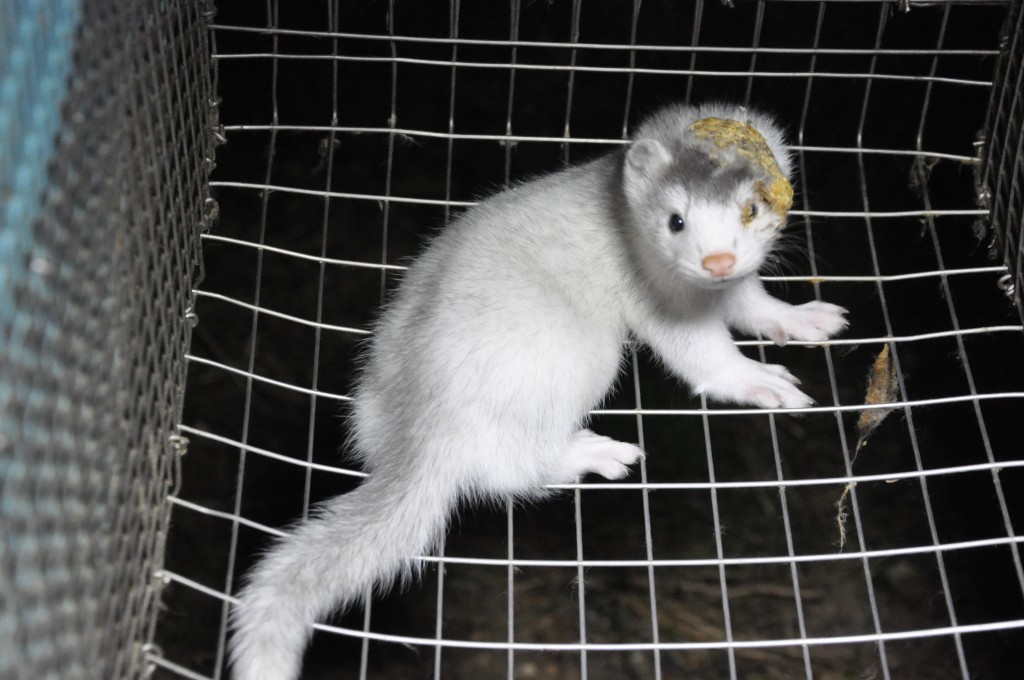Factory farms not only imprison animals for their flesh, they confine other species for their fur. Mink, rabbits, fox, chinchillas, and lynx are confined to metal cages inside filthy sheds. After a life of misery, they suffer a gruesome death. Fur farmers only care about the quality of their fur, and use slaughter methods like poisoning, anal electrocution, gassing, and neck-breaking. Animals are fur farms are not protected by any federal humane slaughter law[ref]peta.org/…/inside-fur-industry-factory-farms[/ref].
Mink are not domesticated, and are solitary animals who occupy vast amounts of land in their native habitats[ref]http://www.worldatlas.com/articles/american-mink-facts-animals-of-north-america.html[/ref]. They are semi-aquatic and spend much of their time in rivers and other water sources. Confined to small wire cages, they often exhibit neurotic behaviors indicating enormous stress, such as self-mutilation and frantically pacing back and forth.
Utah is second only to Wisconsin for the number of mink killed on fur farms. According to the National Agricultural Statistics Service (NASS), in 2014 the fur farming industry slaughtered nearly one million mink for their fur in Utah alone[ref]soglomotest1.wpengine.com/…/USDA_Mink-Production-Report-July242015-2014.pdf.[/ref]. One mink farm in Lehi, Utah by some reports is the largest in the country, believed to have 100,000 mink. NASS no longer reports the total number of farms in states, but the most recent USDA Ag Census from the same year examined 63 mink farms[ref]agcensus.usda.gov/…tah/st49_1_034_036.pdf Note: The number of mink on the Ag census is misleading, as it only accounts for mink who were alive during the census. Mink already killed are measured only as their pelt “value” under “Other Livestock Products.”[/ref]. While new status data is not as complete by county, previous more thorough analysis from NASS showed the highest number of fur farms in Utah, Summit, and Morgan counties[ref]agcensus.usda.gov/…tah/st49_2_022_023.pdf[/ref].
Many of the factory farms in Utah have been surrounded by the gentrification of the suburbs, leaving many new home-owners frustrated by the strong manure smell in the neighborhood. We encourage all residents affected by fur farms to bring your complaints to local elected officials and make it clear fur farms are not welcome.
Everyone can help end cruelty to animals used for their fur by always choose cruelty-free clothing and letting storeowners know you won’t buy from their businesses until they stop selling fur.

